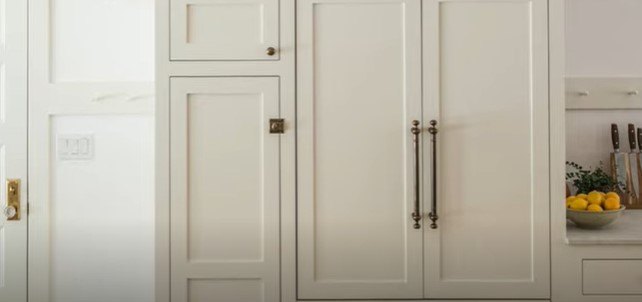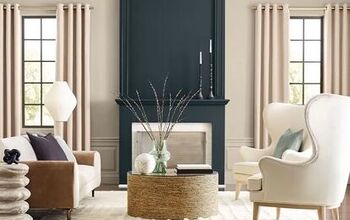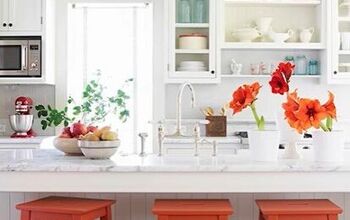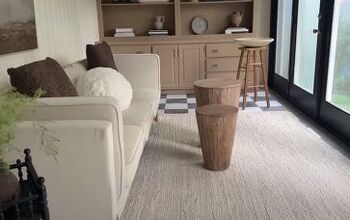How to Choose the Best White Paint Colors For Your Home

How do you choose the best white paint for interior walls? What do you do when you are stuck choosing between white paint colors that all seem to look alike?
Don't worry, we know it’s overwhelming but I have tips on how to choose the best white paint for your home. I’ll give you important insights on lighting, cool and warm undertones, and our top six picks for white paint colors and why we love each one.
How to choose white paint colors
Tip 1: Observe your natural lighting
The type of light you have in a space is probably what makes the biggest difference in how your color will look on the walls. There are a few things to keep in mind. You want to work with the natural light–whether it’s a little or a lot. Every paint color comes with an “LRV” which means light reflectance value.
In general, if you have a dark room without a lot of natural light, you want to choose a paint with a higher LRV number. A higher LRV number will give you a lighter, brighter look. LRV is not that important for rooms with a ton of natural light.
Tip 2: Do you have a north- or south-facing room?
If your room is north facing you will get a lot of cooler tones coming into your space. A south-facing room has a lot of warmer tones coming into the space, which means your paints may take on a yellower look. This will make a difference in what white and which undertone you want to choose.
If your space faces east or west, then you want to stick to a more neutral white color because the light will be changing throughout the day from cool to warm.
Tip 3: Use peel-and-stick paint samples
To understand how your light will affect the white color, I recommend using paint samples up on the wall so you can see the color in your actual space and light.
Look for 12-inch by 12-inch peel-and-stick paint samples that you order from Samplize.com. You can move the sample around the room throughout the day. You don’t need to paint splotches all over your room when you have a peel-and-stick sample.
Tip 4: Consider your other decor
You will need to consider the other elements and finishes in your room. Consider the things that are hard to change, like flooring, furniture, countertops, and textures.
If you have more cooler colors in the space–more grays and blues–then you will want to pick up a white that has cooler undertones. That way the paint will blend in well and look cohesive.
If you have warmer yellow and red tones in the room–such as lots of wood flooring and furniture–go for white with a warmer undertone.
I hope those tips help you understand better how to choose a white paint color. (There’s also another tip after the paints I recommend below.)
Now, here are my favorite white paint colors. My favorites are broken down into three categories: neutrals with little or no warm or cool undertones, warmer whites, and cooler whites.
1. Chantilly Lace by Benjamin Moore
This neutral, fresh white is one of the purest whites you will find. It’s one of the most popular white paint colors. It’s so versatile and will instantly brighten your space.
2. Simply White by Benjamin Moore
This neutral white has a slight hint of warmth without looking yellow. It’s great for walls, cabinets, ceilings, and trim. I would use a neutral white if I wanted a fresh, modern feel. A neutral white gives a great contrast if you want to pair it with some darker paints or furnishings.
Use a neutral when…
When would I not use a neutral paint color? If you have a lot of other white furnishings or white finishes in the room (like above), sometimes a pure white will make all the other white elements look dingy.
Now let’s discuss warm whites. A warmer white offers a more welcoming, cozy vibe. Some people are afraid of the yellow undertones making everything look too yellow. In the right scenario, a warm white can be very pretty.
3. Swiss Coffee by Benjamin Moore
This beautiful, cozy warm white has a little yellow undertone almost taking it to a cream color. It has a richness to it and it will not become washed out in a room with a lot of natural light.
4. Alabaster by Sherwin-Williams
We’ve used Alabaster in all of our RV renovations (here’s a shot of our RV above). It is not a super stark white and it has some dusty undertones.
5. White Dove by Benjamin Moore
This warm, inviting white is a slight off-white color that may sometimes read a little bit green or yellow depending on the light coming into the space.
Use a warm white when…
I’d use a warm white in a north-facing room because the yellow-green undertones can balance out the blue natural light coming in from the north. The space will feel a little bit cozier. Use warm white if you have other warm finishes in the room because they will play off of each other.
Do not use a warm white when…
When would I not use a warm white? If there are a lot of blues and grays in the room (like the gray couch, drapery, and pillows here), then choose a cooler white. If you use warm white in a room with cool finishes and furniture, the white paint will end up looking a little bit dirty.
6. Snowbound by Sherwin-Williams
This cool grayish-blue white is crisp and cool. It has a little bit of a gray undertone with a hint of dusty pink. It’s a pretty color, and a little unique.
Cooler whites work well in south-facing rooms to balance out that warm yellow light that comes in during the late afternoons. If you have a lot of marbles, blues, and that kind of vibe, a cool white is a perfect choice.
Do not use a cool white when…
I would not use a cool white if you do not have a lot of natural light in the space (like the room above) and you rely on artificial light, stay away from cool undertones. Also, if you have warm finishes in your space (again, like the room above), like oak floors and cabinets, stay away from cool whites and stick to warm whites.
Tip 5: What finish should you use?
A good rule of thumb is to use eggshell on walls, satin on trim and cabinets, and flat for your ceilings. If you paint your walls and trim in the same color white, I recommend going one sheen higher on the trim and cabinets compared to the walls. Doing this will result in a finished look.
How to choose white paint
To recap, just pay attention to the lighting in the space and the existing decor elements to guide you in choosing the best white paint color for the room. I hope my six recommendations of my go-to whites can be of help, too.
Please share in the comments if you have other favorite white paint colors and why.







































Comments
Join the conversation